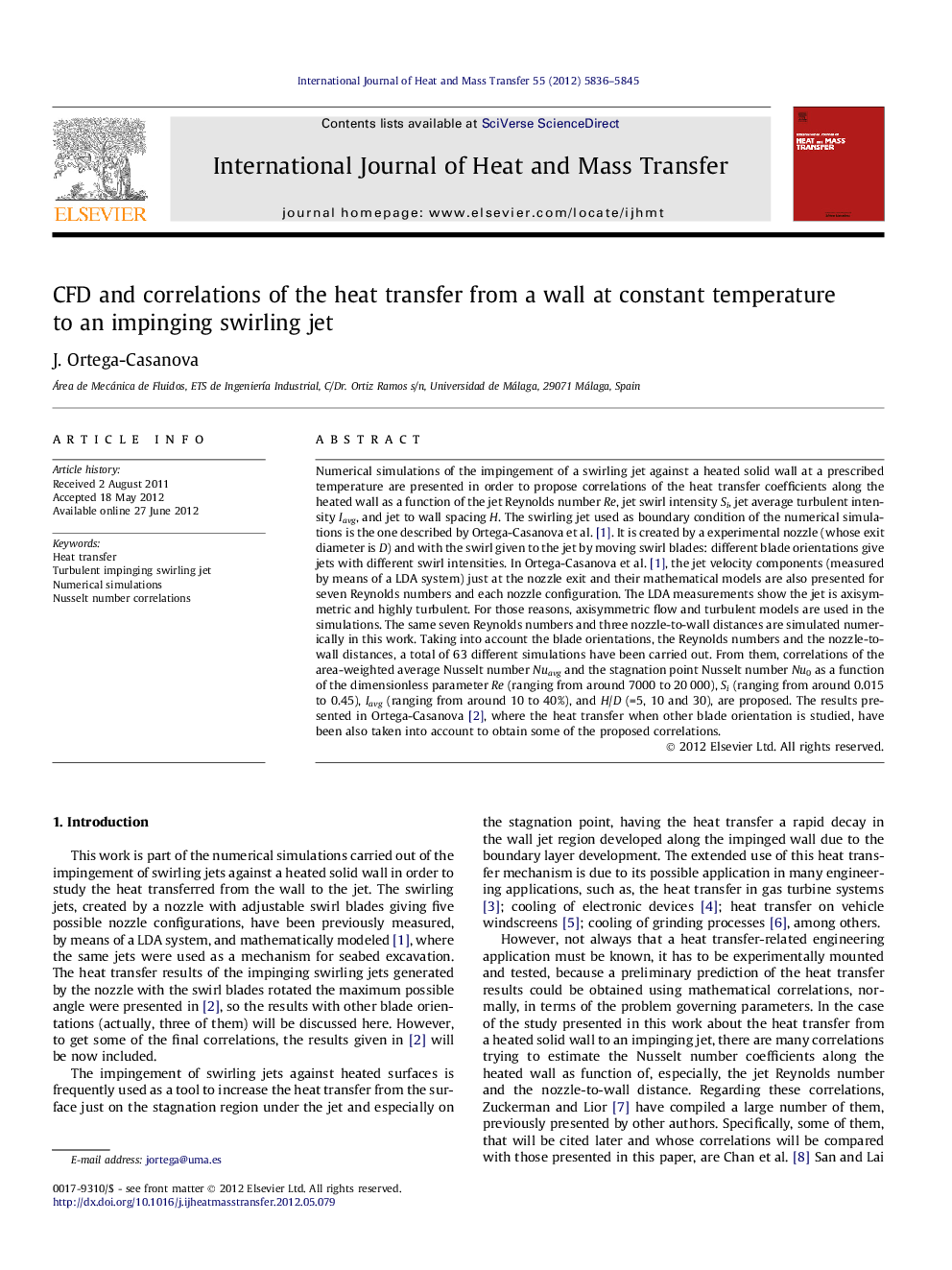| کد مقاله | کد نشریه | سال انتشار | مقاله انگلیسی | نسخه تمام متن |
|---|---|---|---|---|
| 659144 | 1458090 | 2012 | 10 صفحه PDF | دانلود رایگان |
عنوان انگلیسی مقاله ISI
CFD and correlations of the heat transfer from a wall at constant temperature to an impinging swirling jet
دانلود مقاله + سفارش ترجمه
دانلود مقاله ISI انگلیسی
رایگان برای ایرانیان
کلمات کلیدی
موضوعات مرتبط
مهندسی و علوم پایه
مهندسی شیمی
جریان سیال و فرایندهای انتقال
پیش نمایش صفحه اول مقاله

چکیده انگلیسی
Numerical simulations of the impingement of a swirling jet against a heated solid wall at a prescribed temperature are presented in order to propose correlations of the heat transfer coefficients along the heated wall as a function of the jet Reynolds number Re, jet swirl intensity Si, jet average turbulent intensity Iavg, and jet to wall spacing H. The swirling jet used as boundary condition of the numerical simulations is the one described by Ortega-Casanova et al. [1]. It is created by a experimental nozzle (whose exit diameter is D) and with the swirl given to the jet by moving swirl blades: different blade orientations give jets with different swirl intensities. In Ortega-Casanova et al. [1], the jet velocity components (measured by means of a LDA system) just at the nozzle exit and their mathematical models are also presented for seven Reynolds numbers and each nozzle configuration. The LDA measurements show the jet is axisymmetric and highly turbulent. For those reasons, axisymmetric flow and turbulent models are used in the simulations. The same seven Reynolds numbers and three nozzle-to-wall distances are simulated numerically in this work. Taking into account the blade orientations, the Reynolds numbers and the nozzle-to-wall distances, a total of 63 different simulations have been carried out. From them, correlations of the area-weighted average Nusselt number Nuavg and the stagnation point Nusselt number Nu0 as a function of the dimensionless parameter Re (ranging from around 7000 to 20Â 000), Si (ranging from around 0.015 to 0.45), Iavg (ranging from around 10 to 40%), and H/D (=5, 10 and 30), are proposed. The results presented in Ortega-Casanova [2], where the heat transfer when other blade orientation is studied, have been also taken into account to obtain some of the proposed correlations.
ناشر
Database: Elsevier - ScienceDirect (ساینس دایرکت)
Journal: International Journal of Heat and Mass Transfer - Volume 55, Issues 21â22, October 2012, Pages 5836-5845
Journal: International Journal of Heat and Mass Transfer - Volume 55, Issues 21â22, October 2012, Pages 5836-5845
نویسندگان
J. Ortega-Casanova,